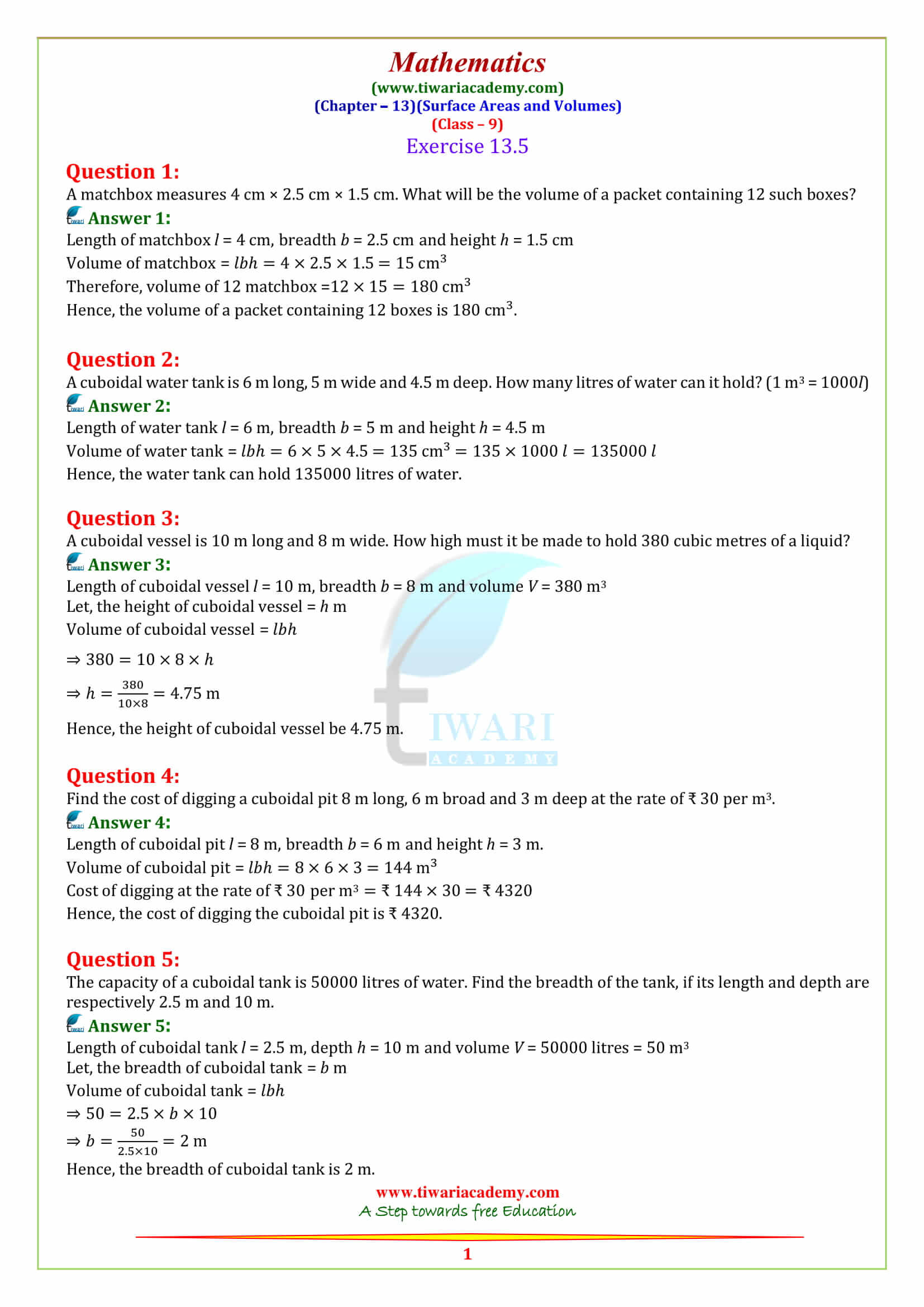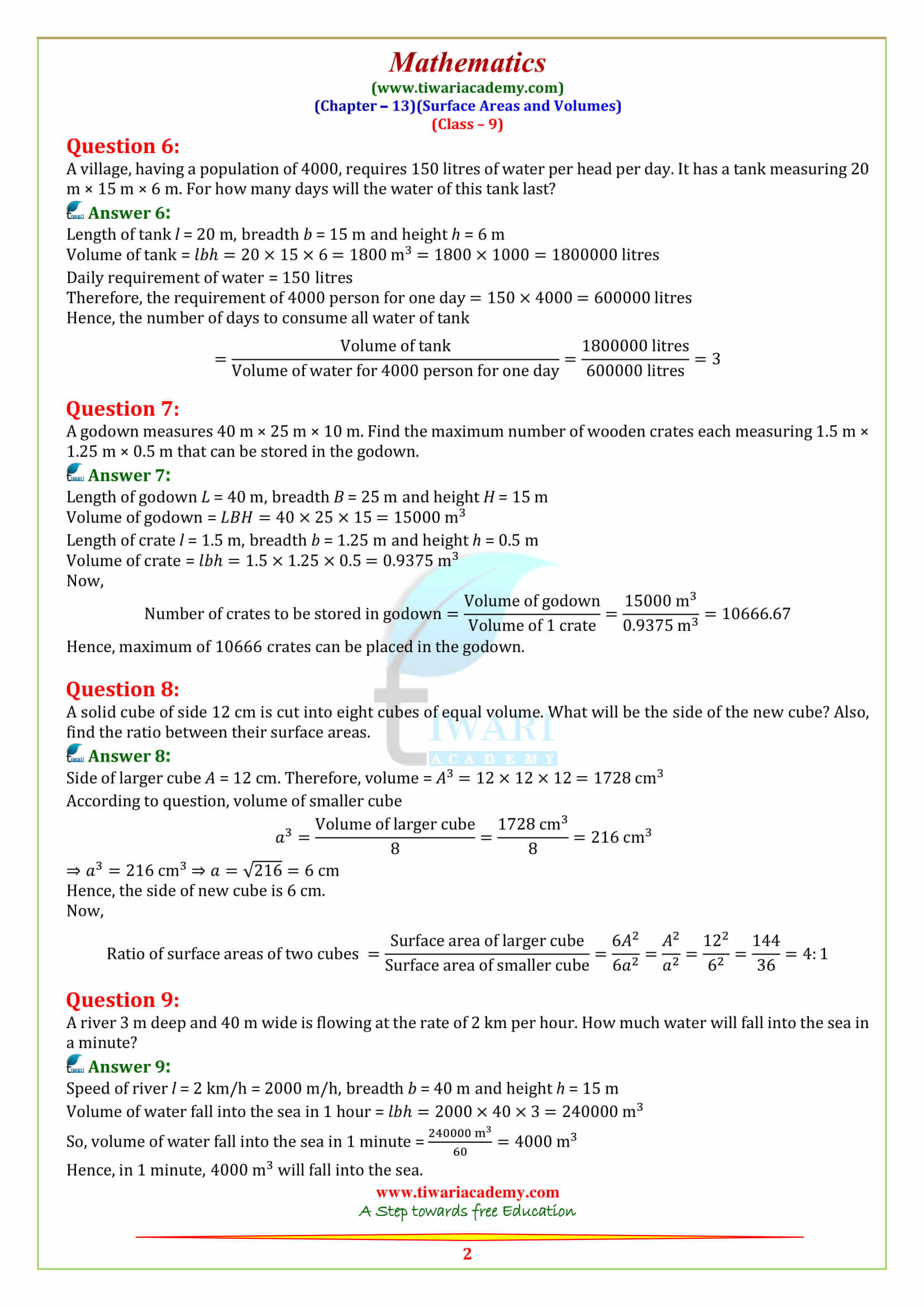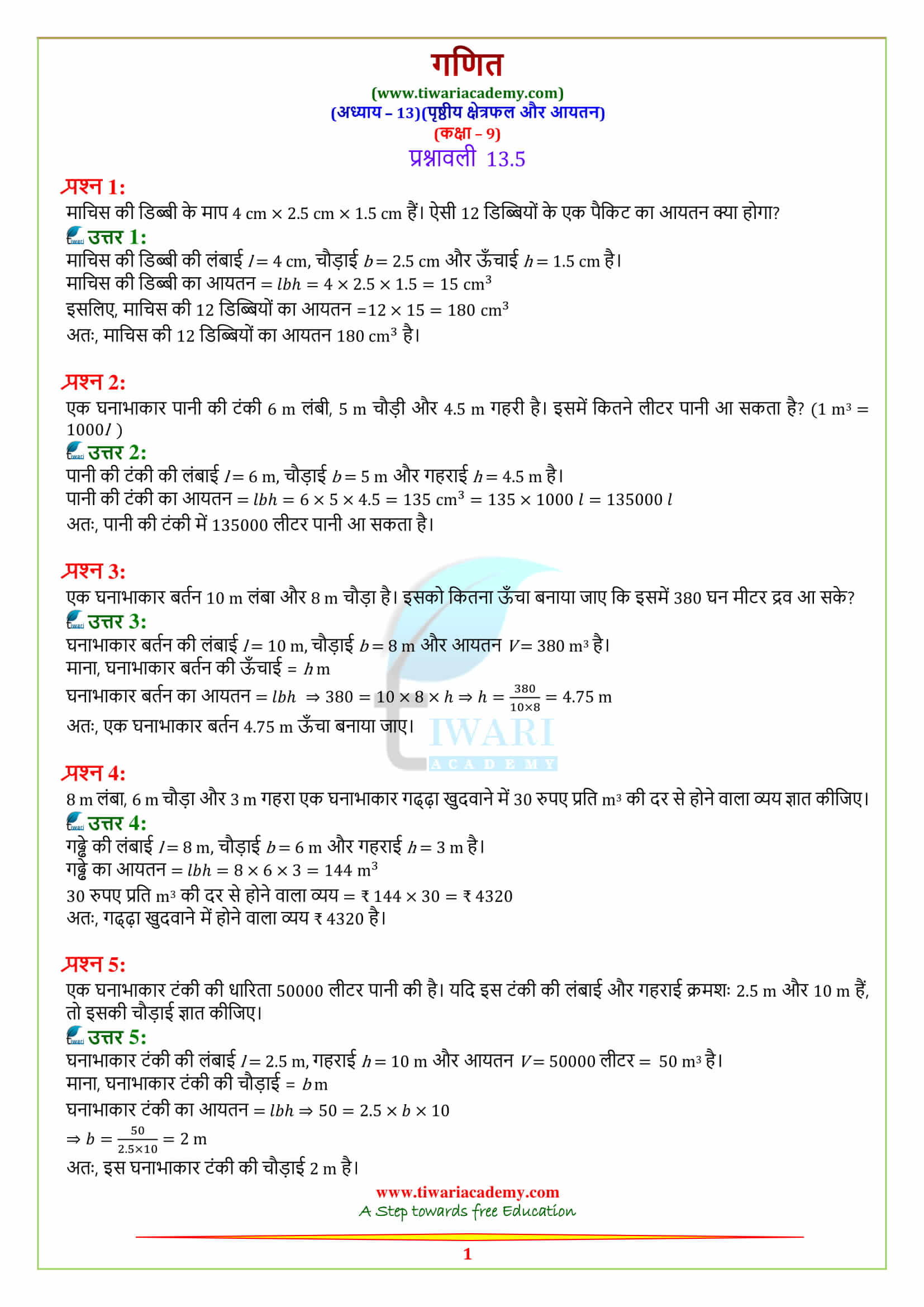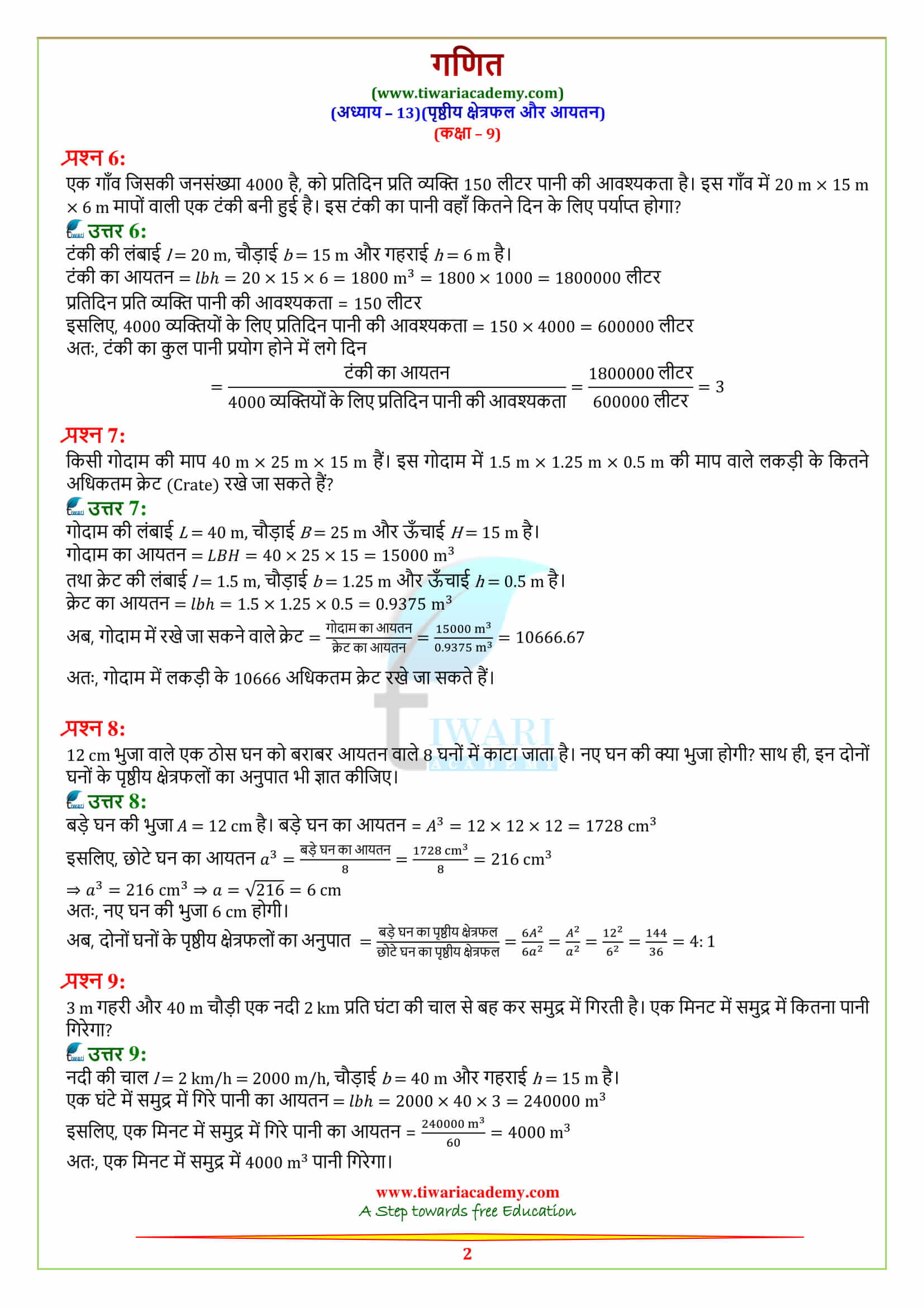NCERT Solutions for Class 9 Maths Exercise 13.5 Surface Areas and Volumes updated for all boards in Hindi and English medium. Get the latest NCERT Solutions for Class 9 Maths Exercise 13.5 on Surface Areas and Volumes, expertly updated for CBSE and State board. Available at Tiwari Academy in both Hindi and English mediums, these guides are your key to mastering the topic with ease.
NCERT Solutions for Class 9 Maths Exercise 13.5
Volumes of solid objects
By completing the above-given topics so far, you have learned about volume of spheres and hemispheres, and many other shapes too. Recalling that information, we can conclude that every object occupies some space.
Even air occupies space if you contain it in a closed structure. If you exceed the limit it will overflow from it. Gas cylinders and water bottles are classic examples of it. In Exercise 13.5 of class 9 Maths NCERT Book, we will solve the sums based on air volume filled in container.
| Class: 9 | Mathematics |
| Chapter: 13 | Exercise: 13.5 |
| Topic: | Surface areas and volumes |
| Content: | NCERT Solution |
| Medium: | English and Hindi Medium |
More about Class 9 Maths Exercise 13.5
Here we will study about the structures that could be solid or hollow. In both the cases, the inner part is occupied with air, solid or liquid. To fill these hollow objects properly we have find the volume. If you have decided to fill, you must know the capacity of the hollow object.
This is the practical use of the studying to measure the volume of the hollow object. In this part of chapter 13 from NCERT solutions Maths class 9th, we shall understand what volumes of cube and cuboid are.
Volume of cuboid in Exercise 13.5
Before exercise 13.5, you have already studied what are the properties that make cubes and cuboids different from each other. Since you already know that the area of a rectangle and cuboid is nothing more than 3-dimensional figures of the rectangle. In 9th Maths Ex 13.5 solution, we will explore these things in better way using direct formulae.
This provides us with the statement that capacity is the volume of any hollow object which can accommodate any substance in it. By following the above-mentioned statement we understand if we stack rectangles one on the other eventually it will make a cuboid.
Steps to find the Volume of Cube and Cuboid
Volume means area with height. It shall be provided with the height of the structure. If the area of a rectangle is l × b. As per the explanation given here the volume will be equal to the area of the rectangle multiplied by the height.
After a further breakdown you will get the formulae of volume of a cuboid = base area × height = length× breadth× height. Similarly, Volume of the cube shall be = edge × edge × edge = a³. You must understand that unit of answer finding volumes should come in cubes or you have to convert it into cubes.
How many questions are there in exercise 13.5 class ix NCERT Maths chapter 13?
There are 9 questions in exercise 13.5 of class 9 Maths. Out of these 5 questions are directly using the same concepts of calculating the volume of cuboid. Only 3 questions are little bit different and tricky also. This means the Volume of cuboid is the key concept of exercise 13.5 of chapter 13 of Mathematics. Solving all 5 questions will enhance your knowledge to perceive the step to obtain the solution.
What are the important questions in exercise 13.5 of chapter 13 class 9 Maths textbook?
All the questions in exercise 13.5 of chapter 13 of Maths NCERT of class 9 are important to gain the knowledge. These are based on measure capacity of geometric shapes. Here you will learn to calculate the volume of a particular geometric shape. The question number 9 is one of the most important questions of ex 13.5 in 9th Maths NCERT.
How to score well in exercise 13.5 of 9th Maths NCERT textbook?
Review the main concepts and formulas related to the exercise 13.5 of 9th Maths. In particular, review the formulas for calculating the volume of a cube, cuboid, sphere, hemisphere, and cylinder. Practice solving problems for each of the shapes. Start with easy questions that require you to calculate the volume of one shape like question number 2, 3 and 5. Utilize Tiwari Academy’s resources and practice questions to gain a better understanding of the concepts.





